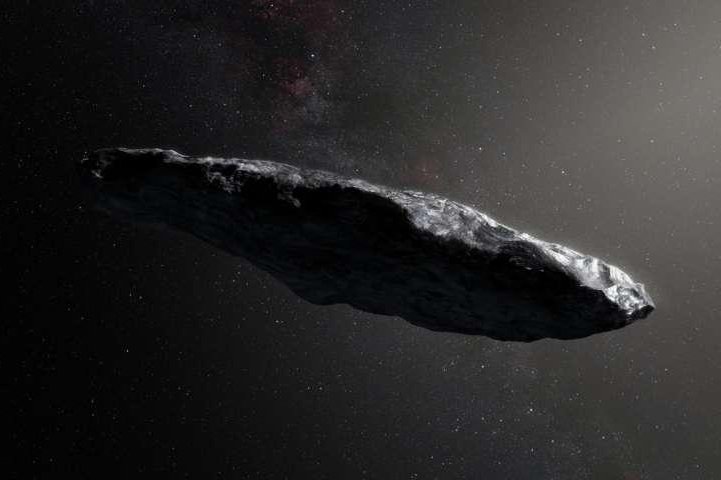The solar system's first intergalactic visitor has been tumbling for a billion years. Photo by ESO/M. Kornmesser
Feb. 12 (UPI) -- The first intergalactic object observed by scientists, a massive orb named 'Oumuamua, has been tumbling about the universe for at least a billion years, new research suggests.
'Oumuamua first appeared last fall. Scientists originally thought it was a comet, but when the orb swung around the sun without melting, researchers determined it was most likely an asteroid.
One study showed, however, that the unusual object likely boasts an icy interior, further confusing the orb's identity.
Whatever 'Oumuamua is, it's now far away from the sun and getting farther by the minute. But during its brief trip through our solar system and past the sun, researchers were able to train several telescopes on the object. Astronomers are still analyzing the collected data.
The latest investigation of 'Oumuamua suggests the orb doesn't spin or rotate like most asteroids. Instead, it tumbles -- reorienting itself sporadically.
Scientists aren't sure why 'Oumuamua tumbles as it does, but they estimate its movement likely has something to do with the collision that made the object an intergalactic traveler.
"Our modeling of this body suggests the tumbling will last for many billions of years to hundreds of billions of years before internal stresses cause it to rotate normally again," Wes Fraser, an astrophysicist at Queen's University Belfast, said in a news release. "While we don't know the cause of the tumbling, we predict that it was most likely sent tumbling by an impact with another planetesimal in its system, before it was ejected into interstellar space."
Surveys of 'Oumuamua suggest the cucumber-shaped orb is characterized by compositional variety -- both inside and out. Though the object has a spotty coloration on the majority of its surface, the side that faced Earth during most of its journey around the sun featured a rusty red color.
Researchers published their latest analysis of in the journal Nature Astronomy.
"We now know that beyond its unusual elongated shape, this space cucumber had origins around another star, has had a violent past, and tumbles chaotically because of it," Fraser said. "Our results are really helping to paint a more complete picture of this strange interstellar interloper. It is quite unusual compared to most asteroids and comets we see in our own solar system."















